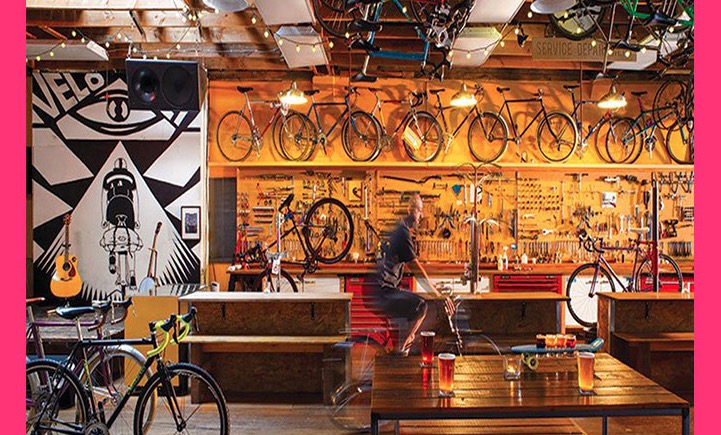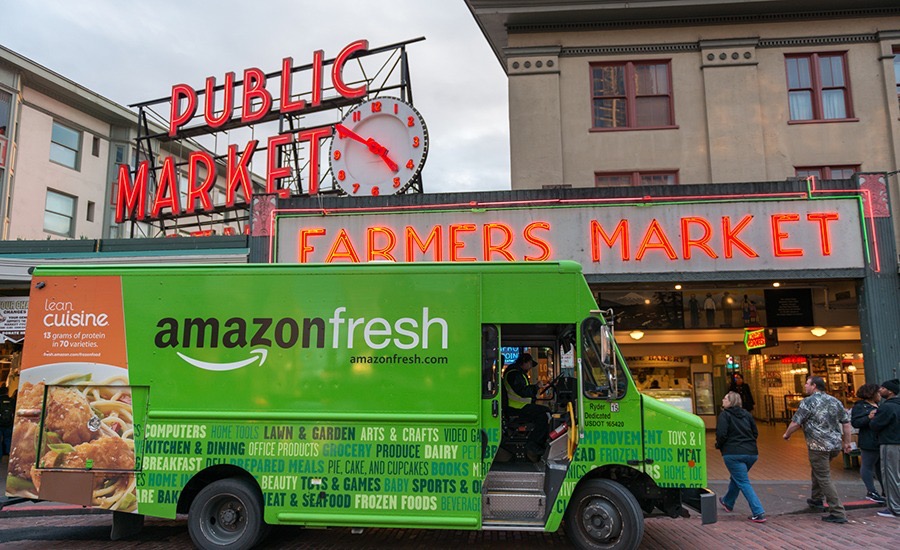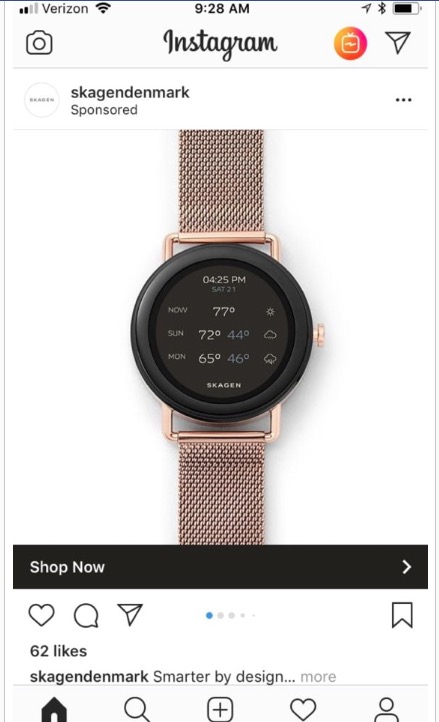Ecommerce trends have an undeniable growing influence on shoppers and retail sales. In fact, figures for the most up-to-date eCommerce trends show that eCommerce influences as much as 56% of in-store purchases, while eCommerce itself represents almost 10% of U.S. retail sales. These stats illuminate a promising future for eCommerce, showing a positive upwards trend with an average annual increase of 15%.
The bottom line is that eCommerce is not only here to stay but also a driving factor of retail growth. It plays a crucial role in how your customers interact with your brand now and in the future. As an online retailer, you need to keep up with the latest eCommerce retail trends and fully integrate digital commerce in order to thrive in today’s market.
In this post, we will elaborate on eCommerce market trends that you need to employ in your marketing strategy to stay on the cutting edge and stand out from your competition in 2019.
Here are the things that we will discuss and analyze in this article:
1. Trends in eCommerce platforms
The increasingly popular eCommerce trend of shopping online is undeniable. Take for example the growing amount of people who opt to avoid the crowded stores and shop from the comfort of their home over the Black Friday weekend. 2017 saw new record highs of some 58 million people shopping online only, versus roughly 51 million at physical stores. This number increased in 2018, hitting a +23% increase in sales.

The search to deliver a better shopping experience has only accelerated with the introduction of new technologies that makes online shopping faster and more convenient than ever.
Let’s look at some of the top trends that are paving the way for the future of eCommerce:
Voice search
Just when you think that it can’t get any easier to shop online, enter: voice search. This year more consumers than ever are opting to use nothing more than their voice to navigate the web and shop online while their cell phone never leaves their pocket.
This had led to more and more online retailers adapting to eCommerce market trends that point towards voice search becoming the preferred way to search the web. Did you know that research shows that over 40% of millennials are currently using voice search before they complete their online purchase? In fact, Google trends in 2018 show that 20% of all mobile searches are done via voice search. And, as more voice-activated devices such as the Amazon Echo and Google Home are adopted by consumers, you can expect that number to sky-rocket!re
Another thing to keep in mind is that from an SEO perspective, the current eCommerce marketing trends in voice search means that it is vital that you add more spoken keywords and phrases to optimize your content.

Popular brands such as Domino’s Pizza have taken the plunge. Domino’s skill allows clients to order pizza by voice commands from their devices — and even check their order status!
B2C-like functionalities in B2B eCommerce
In 2018, emotional marketing has increased as an eCommerce trend and is influencing the B2B sector to take on some characteristics of B2C-like functionalities. Alibaba is a prime example of using targeted messaging and market segmentation to personalize the purchase journey of customers and drive up sales. This way, they successfully invoke customers’ emotions and blur the lines of these two marketing concepts to embrace the latest eCommerce retail trends, becoming the go-to place for customers to buy from directly.
Ecommerce businesses that aim to stay on top of their game are combining tech-savvy millennials’ preferences and evolutions in optimizing technology in the eCommerce sector. This powerful fusion has caused a notable disruption by B2C-like purchasing preference in 2018. Research shows that 89% of buyers search online during a B2B purchase process, and 74% percent of these consumers do so for over 50% of their purchases. Meaning that in 2019 you can expect consumer habits to further evolve toward a digital-first discovery process, so ensuring B2C-like functionalities such as and faster, frictionless and simpler ordering process, is more important for online shops than ever before.
2. eCommerce trends in mobile tech
Everyone has a mobile phone these days, and they are always using it — for everything. Consider that Shopify identified selling phone accessories as one of the top eCommerce product trends 2018, estimating in 2018 the market capital will reach $107.3 billion. That’s a lot of accessories for a lot of phones! The more our mobile phones are integrated into our daily lives, the more we see eCommerce mobile trends evolving.
Mobile payments (scan, fingerprint, and facial recognition)
As much as 62% of smartphone users have completed an online purchase using their mobile phone is the past 6 months. And, as the market gears up to welcome mobile as the preferred payment method for eCommerce transactions, you must be sure to create an eCommerce site that is optimized for mobile. It’s vital. Experts estimate that mobile will reach 70% of eCommerce traffic by the end of 2018, and continue to grow from there.
New technology trends such as fingerprint and facial recognition technology, not to mention simplifying mobile purchases by scanning and one-click payments, will all play a role in encouraging growth in this sector. We can expect to see that eCommerce mobile trends making the shopping experience more personalized and simple will result in luring customers away from their desktops.

Starbucks’ Barista AI-based virtual assistant
An example of a successful mobile payment app is Starbucks’ Barista. This extension built into their mobile order and pay feature has made Starbucks the most popular mobile payment app; a position they are expected to maintain through 2022. In 2018 alone over 23.4 million users over the age of 14 used the app to make a purchase. What makes the app so popular? It’s not just the added value to the customer experience by rewarding customers with loyalty points and coupons. Barista, an AI-based virtual assistant, allows customers to place an order with voice commands or messages and skip waiting in long lines.
AR in eCommerce
Augmented reality (AR) is a growing trend in the eCommerce industry. And, AR for mobile is no different.

Ikea Place, a prime example of eCommerce trends
Stores use AR to help sell products by allowing customers to have a truly unique and personalized shopping experience by “test driving” before they buy. How is that possible? Let’s look at Ikea, for example. With Ikea Place, AR allows people to preview in 3D renderings how over 2,000 different pieces of furniture would look anywhere in their home before they buy it. This new eCommerce trend is only gaining in popularity.
Image search
ECommerce managers need to constantly curate the latest eCommerce trends in virtual search. Simplifying users’ search process is key to becoming the go-to-place that customers buy from directly.

Target’s image search app in action
Take Target’s collaboration with Pinterest, for example. By adding Pinterest Lens visual search technology into the Target app, customers are able to snap a pic of their room on a mobile device and…Voilà! They receive a special list of design and decor suggestions just for that space.
Instagram & Native Shopping
Among the top eCommerce web design trends are building out more and more features to encourage native shopping. Instagram is a top example of not only keeping up with the trends but setting them. As customers increasingly prefer to not leave the platform that they are on to make a purchase, the evolution from adding quick links to a brand’s website for browsing, to then adding shoppable tags into posts hit an all new high in 2018 when they added native payments options. Now, viewers can complete a purchase without ever leaving Instagram!
3. eCommerce trends in offline retail integration
The top eCommerce retail trends in 2018 were localization, personalization and customer experience. We’ll give you some awesome tips on how to stay current with the trends and grow your eCommerce business in 2019.
Physical stores are changing, not closing:
Retail stores are not dying off, they are changing. Why? Simple. The influence of technology.
Although customers are still looking for physical, onsite interactions, storefronts need to step up their game. As technology evolves and eCommerce trends continue to create an increasingly personalized online shopping experience, it is more important than ever that brick and mortar storefronts do the same. Offering a premium in-store experience that is personalized to your target customer is imperative. Fusion of services and shopping experience is a key. Many clothing retail stores have opted to incorporate live music, coffee, even beer taps to keep their customers happy with a stellar store experience.

Portland’s Velo Cult retail stores stand out from the crowd. Offering vintage bicycles, craft beers on tap, coffee, and a stage for local musicians!
Meanwhile, a retail store cannot survive without a well developed digital channel. The balance must be struck to fully integrate digital commerce with the latest eCommerce trends for a brick and mortar storefront to survive.
In-store ROI
Consumer behavior has adapted the modern trend of ROPO, or “research online, purchase offline”. This buying behavior means that creating an influential automated marketing campaign for your eCommerce store should be looked at as an investment toward your offline sales. This ROPO effect even helps advertisers calculate their expected ROI.
4. eCommerce trends in marketing
The future of eCommerce is looking bright and is expected to present opportunities and new challenges to eCommerce managers. As technology continues to advance, will you be able to keep up? Read on to learn more…
eCommerce marketing automation
Marketing automation in eCommerce has evolved to become one of the most important digital marketing trends. This eCommerce trend allows you to stay connected to your audience through customized triggered emails retargeting visitors and resulting in higher conversions. Furthermore, you can communicate relevant promotions and product launches according to viewers browsing and purchase history, which also results in more leads.
Programmatic advertising
Personalization and relevance are two of the biggest factors in eCommerce marketing. That is where programmatic advertising comes in. This hot new trend involves targeting your audience with adverts that they would actually like to see based on their previous searches and shopping trends. Then, periodically the ads are re-shown to the same viewers in order to generate more ROI. This practice can even be applied to video advertising!
Artificial intelligence and machine learning in eCommerce
Artificial Intelligence (AI) is no longer a concept, it is a reality. AI is increasingly helping to drive conversions in our profit-driven global world. It allows companies to not only gather information but to actually analyze it in real-time, creating a more efficient marketing environment for eCommerce businesses. This results in higher conversions, as it allows consumers a more relevant content, thus, a personalized shopping journey.
Another example of how machines are assisting growth for eCommerce businesses is with Chatbots. It just makes sense that as your customers are demanding a more personalized and informed shopping experience, that you supply them with 24/7 assistance. By using chatbots eCommerce sites help visitors make better buying decisions by using either speech or text.
5. eCommerce trends in user interface designs
ECommerce website designs focus on offering the best shopping experience to its viewers. As customer behavior is fluid, so are the design trends that website owners employ to keep users on their sites to explore their product pages longer and hopefully, offer such an awesome shopping experience, that they convert to a sale.
Videos and rich media in product pages
When you optimize product pages with rich media, you further engage your customers with your products. ECommerce stores need to remember that consumers still have questions regarding your products, even if they are not in-store. One of the easiest ways to address these questions in the digital environment is via videos. They are a vital tool in selling your product by educating your customers so they can make the best buying decision.
6. Amazon trends
There is no denying that Amazon is a major eCommerce trend-setter. This eCommerce behemoth is the biggest online retailer worldwide by market cap and has been leading in eCommerce technologies since its founding, being the father of order fulfillment globally. Hence, it deserves it’s very own category in this post.
This mega marketplace platform has adopted a hybrid environment of B2B and B2C to retain its position as a top eCommerce company. When consumers set out to search for a product, 51% of them begin their journey on Amazon. No wonder the platform accounts for a whopping 44% of all eCommerce sales in the country!
Since the launch of Amazon Prime 13 years ago, its ecosystem has evolved and so has loyalty from its subscribers. The program now has enrolled over 100 million Prime members on the planet! Why do 46% of Amazon Prime users buy something online at least once a week? Personalization and attention to customer satisfaction. Some of the perks in subscribing to Prime are out of this world…
In April 2018, Amazon introduced a program available in 37 cities across the US where they deliver Prime members packages directly to their car trunks. And it doesn’t stop there. Once enrolled in Amazon Primes, you can subscribe to Amazon Fresh – where you can buy your groceries online and have them delivered to you, either the same day or a day that works best for you.

Amazon sets eCommerce trends across the board
Furthermore, besides Amazon’s Alexa Ecosystem now being tied to Prime, it also includes integration with a vast variety of products, making voice search a convenient option for customers to browse and purchase items and services across the web.
Something else Amazon is setting the trend for? Ecommerce packaging trends. Making the shopping experience even less stressful, they work directly with manufacturers to reduce overall packaging as part of their Certified Frustration-Free Packaging Program. Amazon also makes every effort to reduce packing material and promises its customers that their packages with the certification will be recyclable.
Monitor. Test. Evaluate. Repeat
These eCommerce trends we mentioned above allow any eCommerce manager to get prepared for the next best thing or even evolve/fulfill their USP, simply by following and investing in 1 trend, in-depth. However, in order for your brand to stay on the edge in 2019, you must wisely invest your time, energy, and money. 2018 saw your competition moving more intensely than ever in a race to discover and implement the latest eCommerce trends in their marketing schemes. 2019 will be even faster meaning a brands’ growth must be even faster, too.
Don’t wait, start today. ContactPigeon stays on the cutting-edge of eCommerce automation and follows the trends, putting all the resources you need to create a successful campaign to grow your business at your fingertips. Get in touch for a free demo meeting to discuss the plan that best fits your marketing needs.
[full_width][cta id=’2774′][/full_width]







